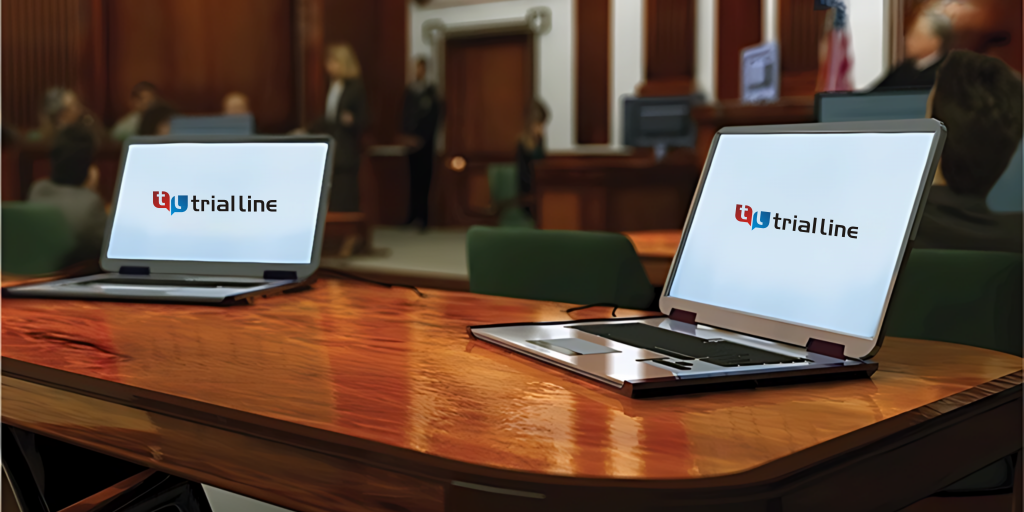Just How Test Presentations Enhance Your Disagreement and Convince Jurors
Trial presentations act as an essential mechanism for enhancing lawful debates and encouraging jurors. By incorporating aesthetic aids, narrative structures, and emotional engagement, attorneys can develop an engaging situation that resonates on numerous degrees. The critical use visuals not just clears up complicated info however additionally captures jurors' focus a lot more efficiently than words alone. The art of narration plays a just as vital role in changing accurate proof right into an engaging narrative, forming jurors' assumptions. Recognizing these components can substantially affect trial outcomes, raising the concern of how each part adds to this complex dynamic.

Importance of Visual Help
Aesthetic help play an important role in improving the performance of test discussions, as they can significantly raise audience interaction and retention of info. In the context of a test, where jurors are charged with processing complicated info, visual aids offer to streamline and clear up bottom lines. Graphes, graphs, and pictures can convey information and principles that might or else overwhelm or confuse jurors, enabling a much more straightforward understanding of the evidence presented.
Moreover, aesthetic aids assist in maintaining juror interest throughout the procedures. By damaging the dullness of spoken testimony, these tools can stress vital arguments, making them more remarkable. Reliable visual help can also evoke emotional reactions, which can be essential in encouraging jurors to line up with the speaker's story.

Crafting Engaging Narratives
An engaging narrative is crucial in trial discussions, as it functions as the backbone of effective persuasion. It allows attorneys to weave with each other truths, proof, and psychological components right into a meaningful story that resonates with jurors. This narrative structure allows jurors to understand the intricacies of the case while assisting them with the attorney's debate.
To craft a compelling narrative, attorneys should concentrate on quality and coherence. This entails developing a clear lead character-- usually the client-- and describing their journey through the occasions concerned. Providing the facts in a logical series boosts understanding and maintains involvement. Additionally, using dazzling descriptions can develop psychological images that aid jurors visualize the occasions, making the story a lot more unforgettable.
In addition, integrating essential motifs throughout the presentation reinforces the navigate to this website core message and help in retention - trial presentations. The narrative needs to not just share details but likewise stimulate a feeling of justice, highlighting the stakes involved. Inevitably, a sound story cultivates a connection between the jurors and the situation, positioning the attorney's argument as both reputable and compelling, therefore raising the probability of a beneficial judgment

Engaging the Court Emotionally
Reliable jury engagement hinges on the attorney's ability to connect with jurors on an emotional degree. This link can substantially impact jurors' perceptions and their supreme decision-making.
Visual aids, such as pictures or video clips, can further enhance psychological involvement, providing jurors with brilliant representations of the case's human elements. Crafting a narrative that highlights the battles and triumphs of the individuals included makes sure that jurors see beyond the lawful disagreements and acknowledge the human repercussions of their decisions.
Additionally, tone and body movement play her comment is here an essential function in communicating emotion. An attorney's enthusiastic shipment can reverberate with jurors, strengthening their psychological financial investment in case. It's vital to balance emotional charms with accurate evidence, making certain that jurors feel forced to act while staying grounded in the fact. Eventually, a psychologically engaged court is most likely to be encouraged, making emotional link a vital element of reliable trial presentations.
Structuring Your Discussion

The body of the discussion ought to be logically segmented into essential factors, each supported by compelling evidence. It is useful to make use of storytelling techniques to weave facts into a story that jurors can quickly adhere to. Aesthetic aids, such as graphes and videos, can improve understanding and interaction, assisting to highlight essential items of proof.
Real-World Study
Examining real-world instance studies provides important insights into the art of trial presentations and persuasion. For circumstances, the spots instance of "O.J. Simpson v. Individuals of The golden state" illustrates exactly how aesthetic aids and compelling narratives can persuade court assumptions. The protection group successfully utilized this content a method that incorporated top-level specialist statements with multimedia presentations, which astounded jurors and eventually affected their choice.
An additional notable instance is the "McDonald's Coffee Instance," where the complainant's lawyers utilized graphic images of the injuries suffered by Stella Liebeck. trial presentations. This stark aesthetic proof played a critical duty in communicating the seriousness of her burns, leading to a considerable court award. Such instances show that impactful trial presentations usually depend upon the reliable integration of visuals and storytelling to evoke psychological responses from jurors
Additionally, the "Casey Anthony Test" highlighted the significance of narrative comprehensibility and integrity. The prosecution's failure to develop an engaging timeline reduced their convincing power, emphasizing the requirement of a well-structured presentation. Examining these instances reveals that effective trial discussions call for tactical planning, psychological interaction, and the capacity to resonate with jurors' values and beliefs.
Conclusion
Test discussions dramatically enhance disagreements and encourage jurors with the strategic use of aesthetic help, compelling narratives, and psychological engagement. A well-structured discussion balances psychological allures with factual proof, ultimately reverberating with jurors' worths.